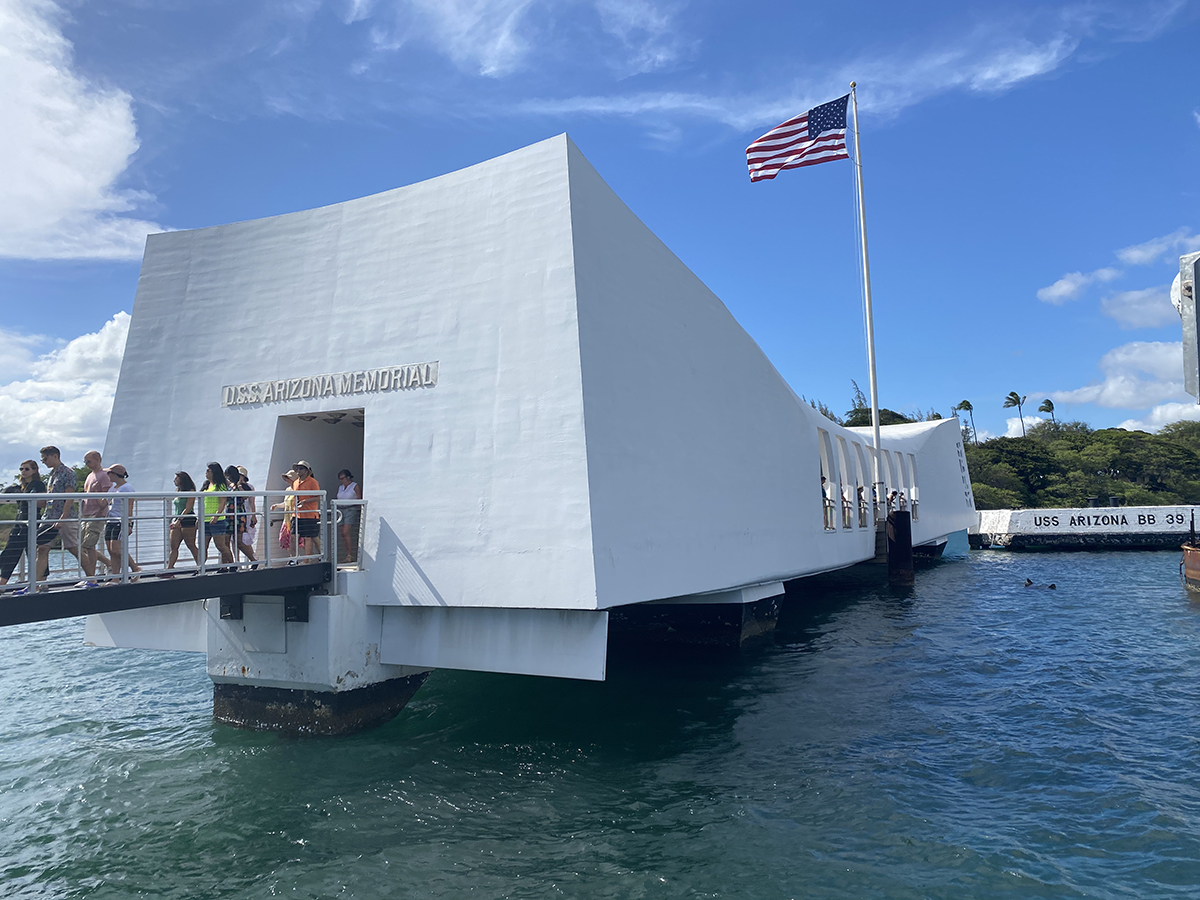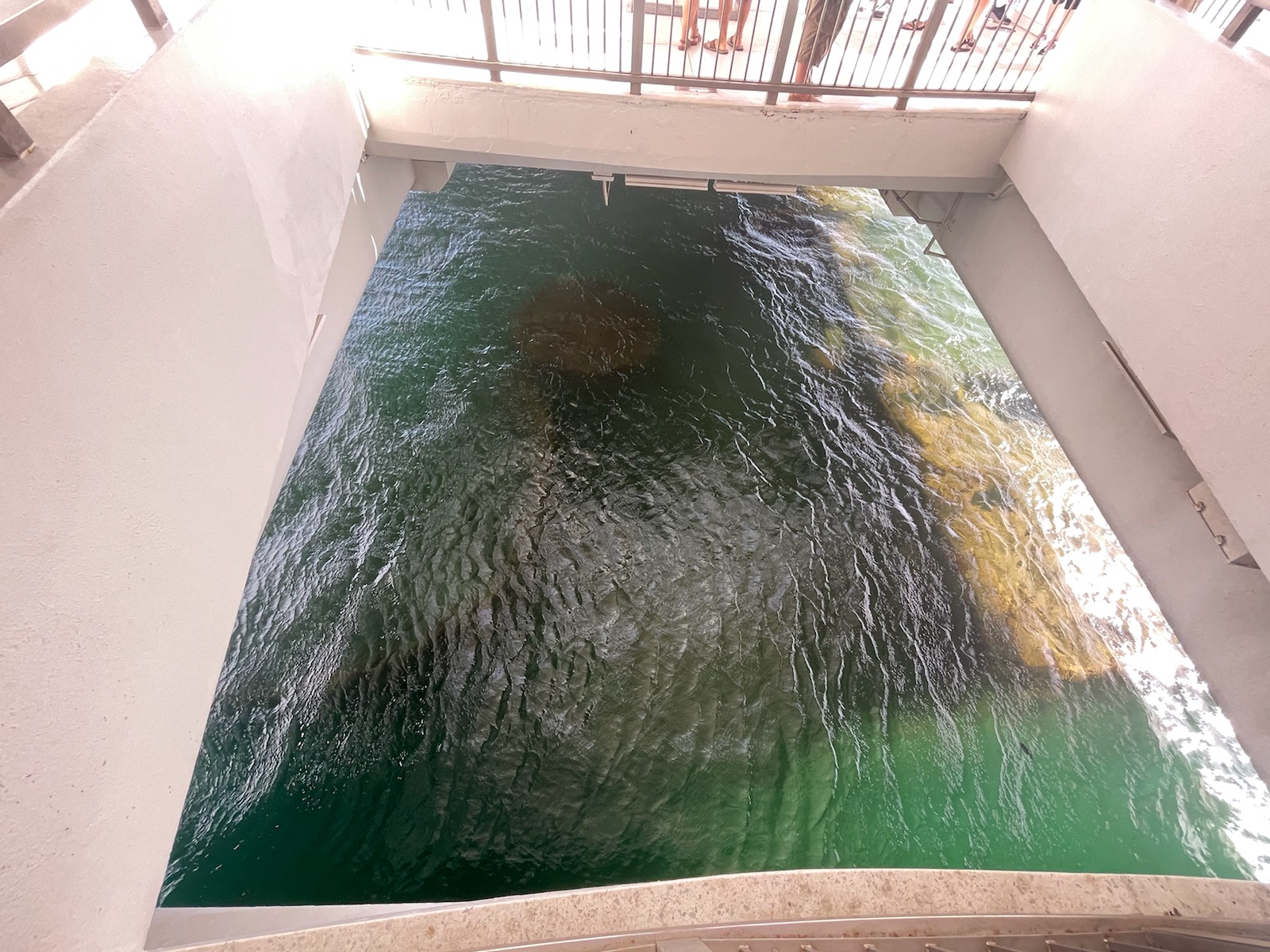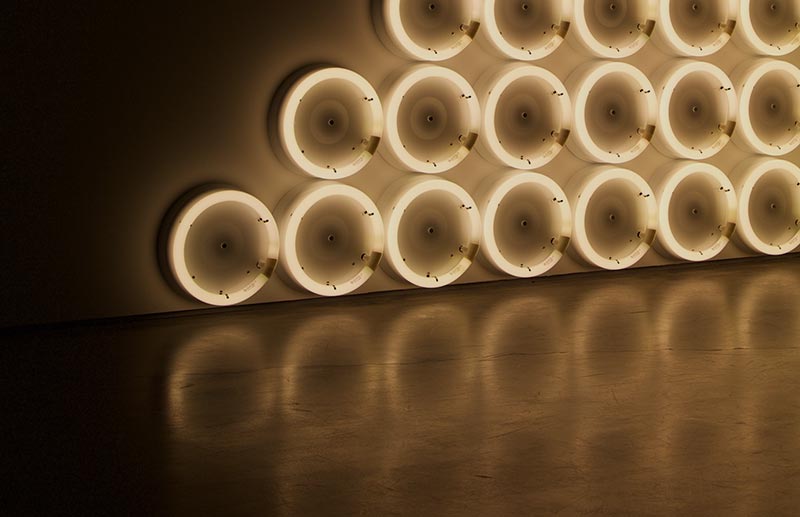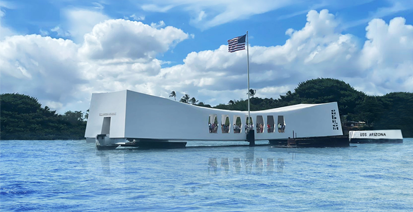Arizona’s Black Tears
The Battleship Arizona was fueled to its maximum level on December 6, 1941, with 1.5 million gallons of oil. Even though the ship was broken in two by the explosion, many of its fuel tanks survived the Dec 7th attack, estimated to be around 500,000 gallons. Over the past eighty years, approximately 50,000 to 65,000 gallons of oil have leaked into Pearl Harbor Bay. Thus, the oil leak at the USS Arizona Memorial can potentially continue for centuries to come.

Visitors exiting the USS Arizona Memorial Monument. Once near the Arizona Memorial Monument, one can notice the smell of fuel oil.

A view into the reflecting pools of the Arizona Memorial Monument. You can see the sheen on the water caused by the leaking fuel from the USS Arizona Battleship.
Each day, the USS Arizona’s oil tanks continue to release droplets of oil into the crystal-clear water of Pearl Harbor; about seven to nine quarts of oil a day; since the oil is lighter than water, the oil slick is very visible from the Memorial and aircraft flying overhead. Numerous travel magazines, newspaper articles, and books have been written about the oil leak they call the “Black Tears of the Battleship Arizona.”
So why does the Navy allow the oil to leak continue? First, the site is an active military cemetery, and they do not want to disturb the resting place of the hundreds of sailors and marines still entombed within her hull.
The second reason the Navy has not acted on the oil leak is because it has symbolic importance and is part of the visitor experience of looking down on the Battleship Arizona. Visitors seeing the oil leaking from its hull tend to bring out their emotions at the Memorial, and they then understand that the event was not that long ago in our country’s past.

The holes in the bottom of the Arizona Memorial Monument allow you to look down into the wreck of the USS Arizona Battleship. Some people have seen interesting shapes in the oil streaks on the water.

The USS Arizona Memorial at Pearl Harbor. Fuel oil continues to leak from the wreck of the USS Arizona Battleship.
The Navy and the National Park Service have decided not to take a chance and try to empty the leftover oil still in the Battleship Arizona’s fuel tanks, which can potentially cause an environmental catastrophe if the tanks are disturbed. The National Park Service at Pearl Harbor has licensed scuba divers on their staff that monitor the Battleship Arizona’s sunken structure and measures the metal fuel tank deterioration rate.
Over the years, as the oil has risen over the shipwrecked Battleship Arizona, hundreds of interesting pictures have been taken by Arizona Memorial visitors that show different patterns and interesting colorations caused by the saltwater mixing with the oil. Numerous photos taken by visitors show images within these oil patches that would give you shivers. For a great book on this subject, we recommend “Renewal at the Place of Black Tears” by Jerome A. Kaufman; for more information on buying this hardcover book, please visit pacifichistoricparks.org.

Arizona Memorial Monument’s assembly room. Looking over the side from the assembly room allows visitors a clear view down on to the wreck of the USS Arizona Battleship.















